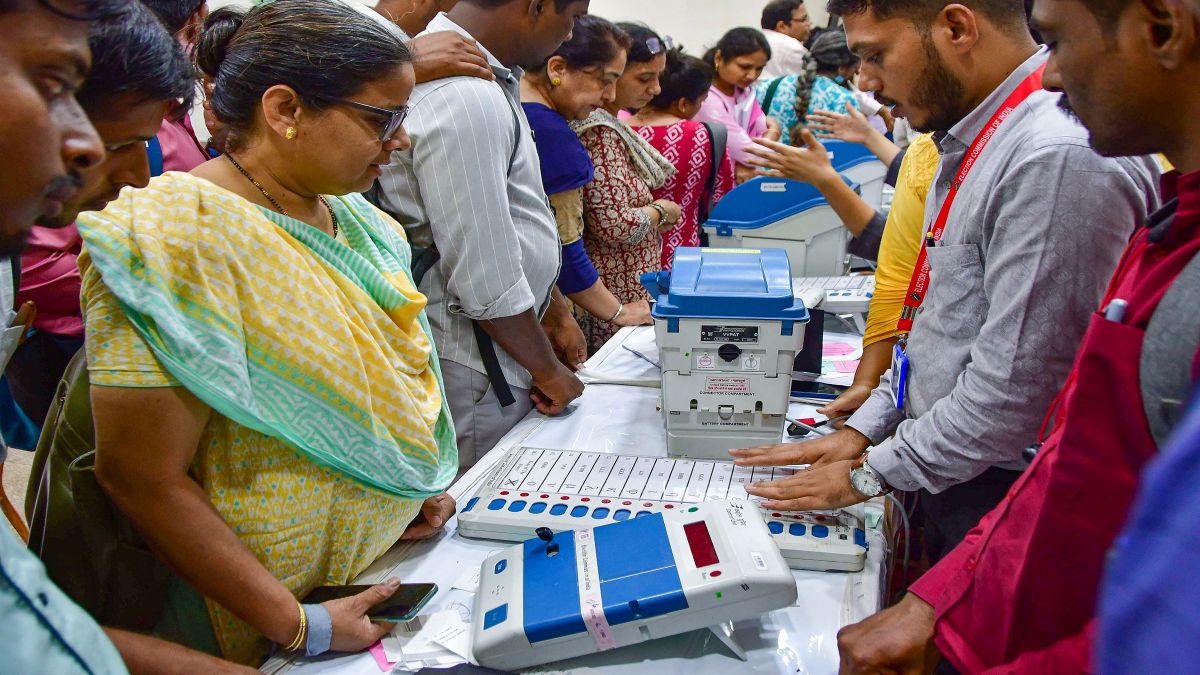As the country votes in Phase 2 of the Lok Sabha elections, the Supreme Court passed an important order, rejecting the demand for 100 per cent cross-verification of votes cast using electronic voting machines (EVMs) with Voter Verifiable Paper Audit Trail machines (VVPATs).
A Bench of Justices Sanjiv Khanna and Dipankar Datta also rejected the plea for going back to paper ballot instead of EVMs.
“We have rejected the prayer for paper ballot voting, complete EVM-VVPAT verification and physical deposit of VVPAT slips,” the court said pronouncing its order.
In its verdict, the Supreme Court, however, passed two important directives. What are they? And what did the apex court say on the matter of EVMs.
We give you the answers.
SC on EVMs
While delivering its verdict in the matter of tallying all VVPAT slips with votes cast through EVMs, the two-judge bench reposed their faith in EVMs. Justice Dipankar Datta and Justice Sanjiv Khanna said that there was a need to nurture a culture of trust.
“While balanced perspective is important but blindly doubting a system can breed scepticism and thus meaningful criticism is needed. Be it judiciary, legislature etc democracy is all about maintaining harmony and trust among all the pillars. By nurturing a culture of trust and collaboration, we can strengthen the voice of our democracy,” the Supreme Court said, as per a Bar and Bench report.
As per an Indian Express report, Justice Datta further stated, “With each pillar fortified, our democracy stands robust and resilient. I conclude with the hope and trust that the system invoked shall not fail the electorate and the mandate of the voting public shall be fully reflected in the votes cast and counted.”
Impact Shorts
More ShortsFor the unaware, the case stems from a plea, which was filed earlier, that stated for a free and fair elections, the tally from EVMs (meaning the data on votes cast) should be cross-verified with the VVPATs. To make sure that this process is carried out as fast as possible, the petitioners had suggested the use of barcodes on VVPAT slips.
EVMs and VVPATs have long been a matter of contention. Many in the Opposition have question how safe are EVMs when it comes to tampering, demanding for a return to ballot paper. There are others who demand for more cross-verification in order to make the voting process more transparent. They argue that a free and fair election is more important than a delay in the results.
The SC’s decision would serve as good news for the Election Commission who has repeatedly defended their procedure. In fact, while announcing the poll schedule on 16 March, Chief Election Commissioner (CEC) Rajiv Kumar had pointed out that constitutional courts had upheld the credibility of EVMs 40 times.
Prime Minister Narendra Modi also welcomed the SC’s decision, saying it is a “tight slap” on those people who continuously tried to “malign EVM”. Addressing a rally in Bihar, the PM said: “These people continuously tried to malign EVM, but today the apex court gave them a very tight slap. They will not be able to see anything, today is a good day for democracy.”
SC’s two important directives
However, while giving EVMs a boost of confidence, the Supreme Court did issue two directives — one on the matter of symbols and other being on the burnt memory.
Firstly, the apex court has directed that on the completion of loading symbols into the VVPAT, the Symbol Loading Unit (SLU) shall be sealed and secured in containers. Moreover, the sealed containers containing the SLUs shall be kept in the strong rooms along with the EVMs at least for a period of 45 days post the declaration of results. They shall be opened and examined and dealt with as in the case of EVMs.
The second directive was that the burnt memory in the EVM microcontroller must be checked by a team of engineers — after results are declared — if candidates make such a request.
The request can be made by candidates who are placed second and third in the results, behind the highest polled candidate, said the Supreme Court, adding that such a request should be made within seven days of the declaration of the results.
The court further directed that the District Election Officer, in consultation with the team of engineers, shall certify the authenticity and intactness of the burnt memory microcontroller. After the verification process is conducted, the actual cost or the expenses for the said verification will be notified by the ECI and the candidate making the said request will make payment of the said expenses. Expenses will be refunded in case the EVM is found to be tampered.
Besides this, the Court also suggest if the EC could use an electronic machine to count the VVPAT paper slips and whether along with the symbol there can be a bar code for each party.
Functioning of an EVM and VVPAT
For many, the functioning of an EVM and VVPAT is still confusing. If you are one of those who are left scratching their heads at how an EVM works, here’s a simple guide.
An EVM has two units — a control unit which is always with the polling officer and the voting unit, which we cast our votes on.
To cast your vote, you enter the booth and press the blue button against the party’s name and symbol of your choice. After you cast your vote, a corresponding paper slip will be made available through the VVPAT to the voter for seven seconds. It’s important that one sees the print properly as the paper won’t be made available to you.
With inputs from agencies
)